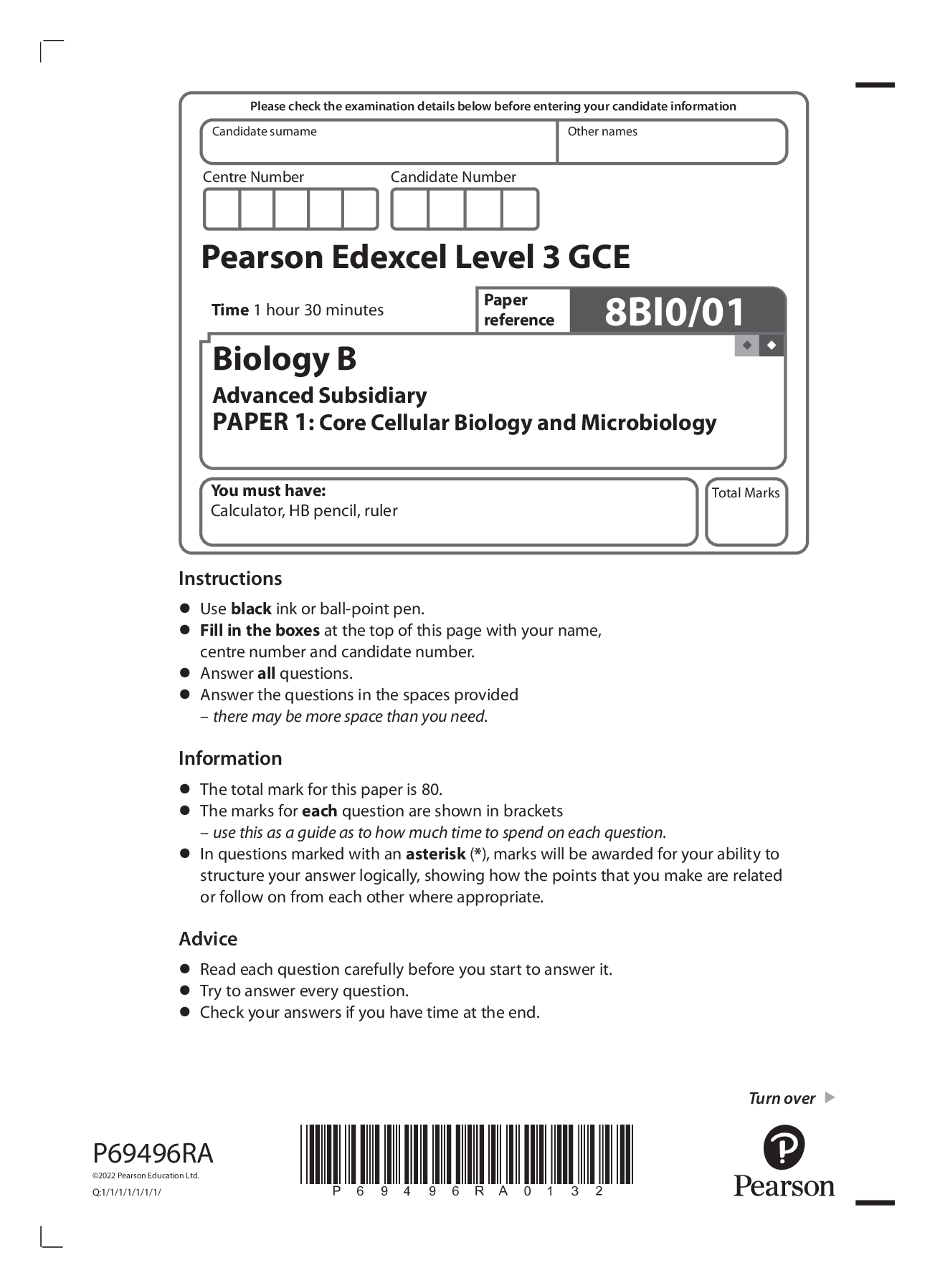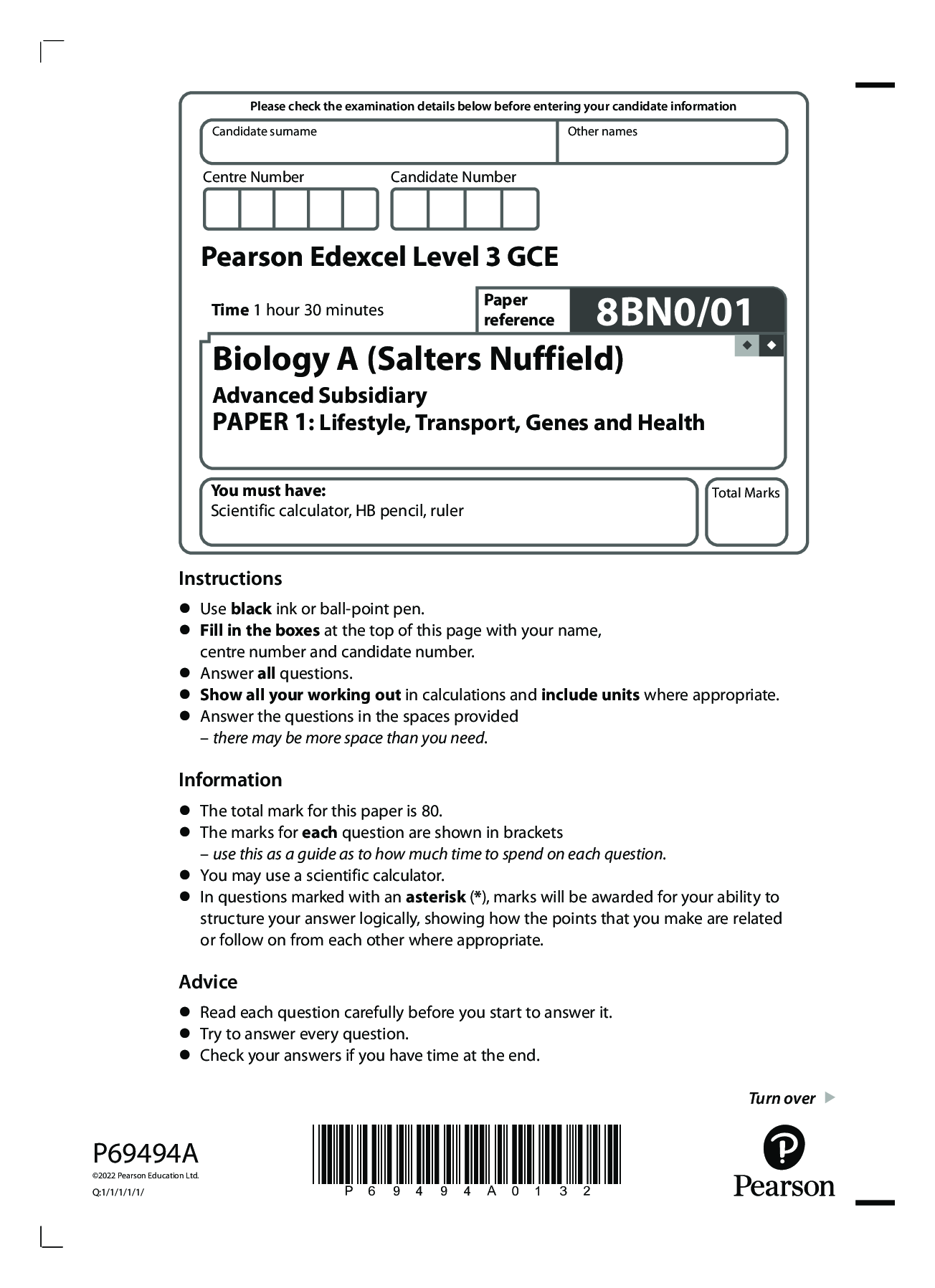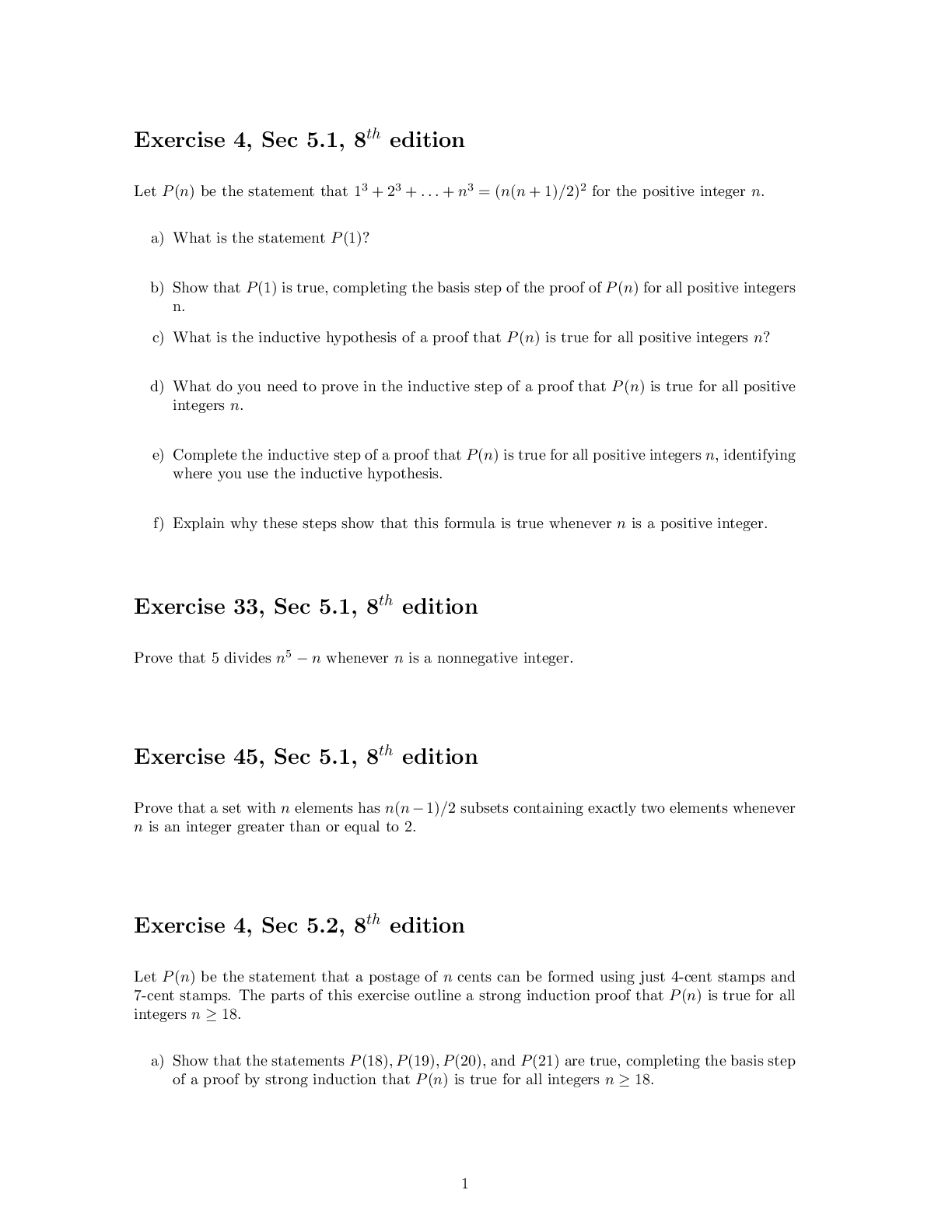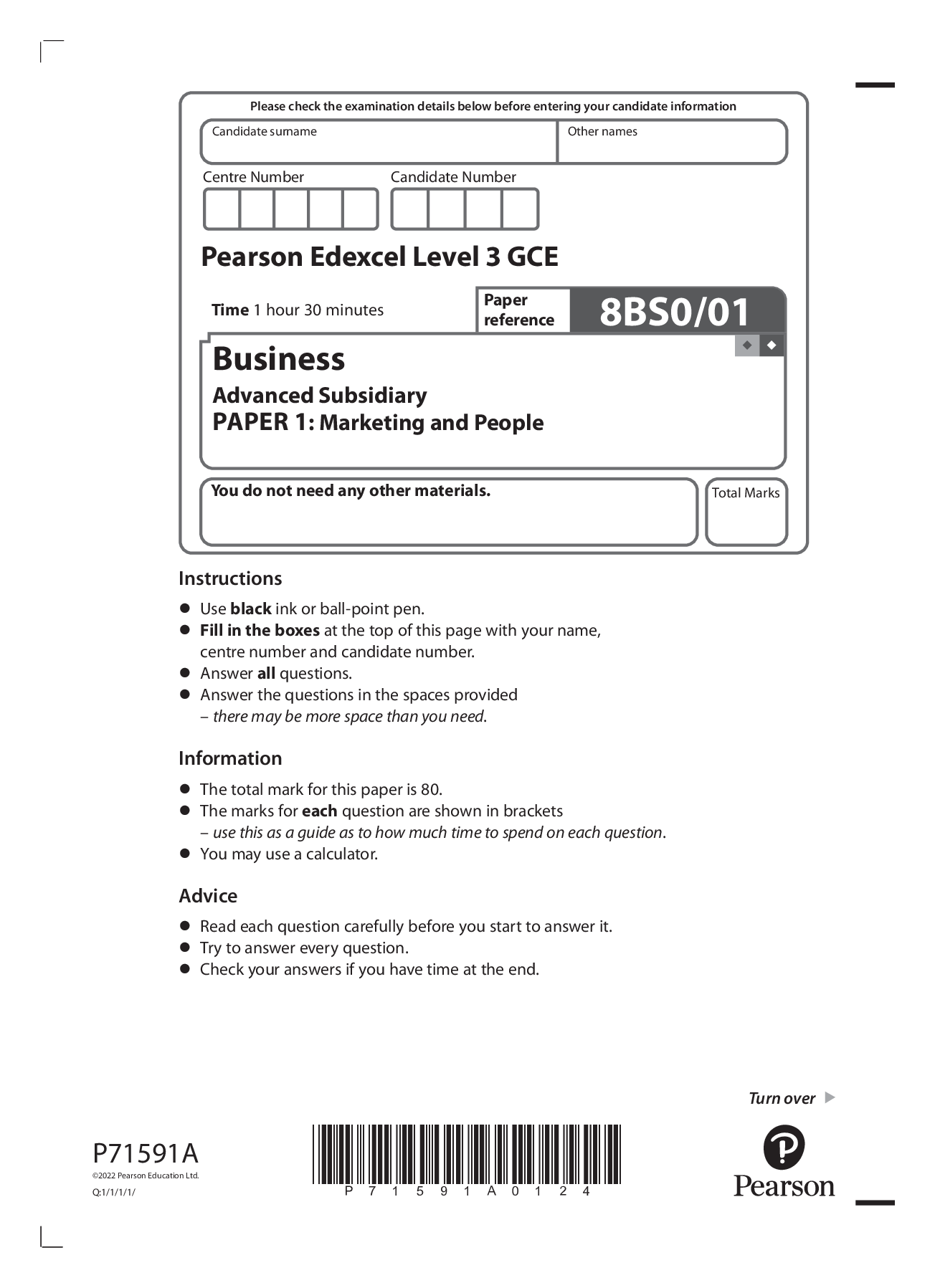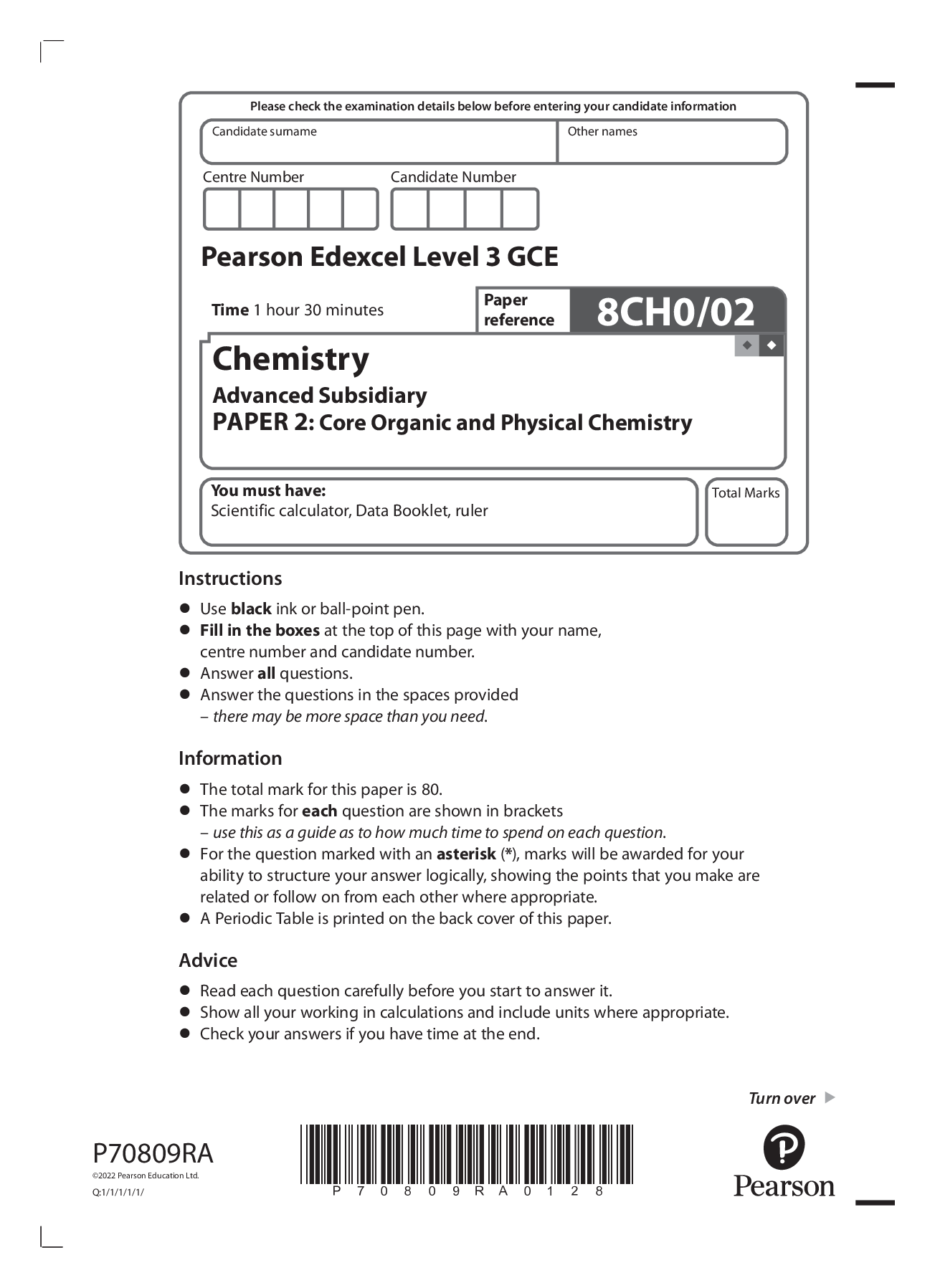*NURSING > QUESTION PAPER (QP) > NUR2063 Exam 3 Focused Review (All)
NUR2063 Exam 3 Focused Review
Document Content and Description Below
NUR2063 Exam 3 Focused Review Ch. 2 Homeostasis, Allostasis, and Adaptive Responses to Stressors • Electrolyte pools- bones act as an electrolyte pool and store calcium magnesium, and phosphate i... ons; shift of electrolytes into electrolyte pools will decrease plasma electrolyte concentration and shift of electrolytes from an electrolyte pool into the extracellular fluid will increase the plasma electrolyte concentration Ch. 7 Neoplasia • Metastasis- process by which cancer cells escape their tissue of origin and initiate new colonies of cancer in distant sites Ch. 9 Inflammation and Immunity • Passive vs active immunity- Passive: transfer of preformed antibodies against specific antigen from a protected or immunized individual to an unprotected or nonimmunized individual; types: mother to fetus: IgG- can cross placenta, mother to infant: IgA- from breast milk, serotherapydirect injections of antibodies (human or animal); active: a protected state owing to the body’s immune response as a result of active infection or immunization, types: immunizations- vaccines • Immunoglobulins- antibodies; two identical light polypeptide chains joined to identical heavy polypeptide chains by disulfide bonds; five different classes: IgG, IgM, IgA, IgD, & IgE • Ch. 11 Malignant Disorders of White Blood Cells • Chronic myeloid leukemia (CML)- characterized by malignant granulocytes that carry the Philadelphia chromosome (Ph+); does not respond well to chemotherapy: poor overall survival time; Blast stage CML- poor prognosis: 3 to 4 months; treatment- bone marrow transplant • Age of onset for multiple myeloma- median age 65 years • Malignant Disorders of WBCs- may be nonspecific signs & symptoms • Ch. 13 Alterationsin Oxygen Transport • Anemia- occursfrom a manifestation of diseases; a deficit of RBCs; leads to hypoxia • Polycythemia- excess of RBCs; increases blood viscosity & volume; leadsto hypertension • Erythropoietin- is stimulated from the kidney secretion hormone to stimulates RBC production • Acute blood loss- type of anemia; may be from trauma or secondary to a disease process; symptoms develop with activity at 20% loss of blood volume (tachycardia and postural drop in BP), and increase in severity with continued blood loss; shock and death can occur with 50% loss of circulating volume; treatment: blood volume replacement therapy with crystalloids, colloids, and fresh whole blood; prognosis: excellent with treatment unless blood loss is severe • Ch. 14 Alterationsin Hemostasis and Blood Coagulation [Show More]
Last updated: 2 years ago
Preview 1 out of 9 pages

Buy this document to get the full access instantly
Instant Download Access after purchase
Buy NowInstant download
We Accept:

Reviews( 0 )
$13.00
Can't find what you want? Try our AI powered Search
Document information
Connected school, study & course
About the document
Uploaded On
Feb 14, 2022
Number of pages
9
Written in
Additional information
This document has been written for:
Uploaded
Feb 14, 2022
Downloads
0
Views
87



